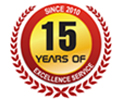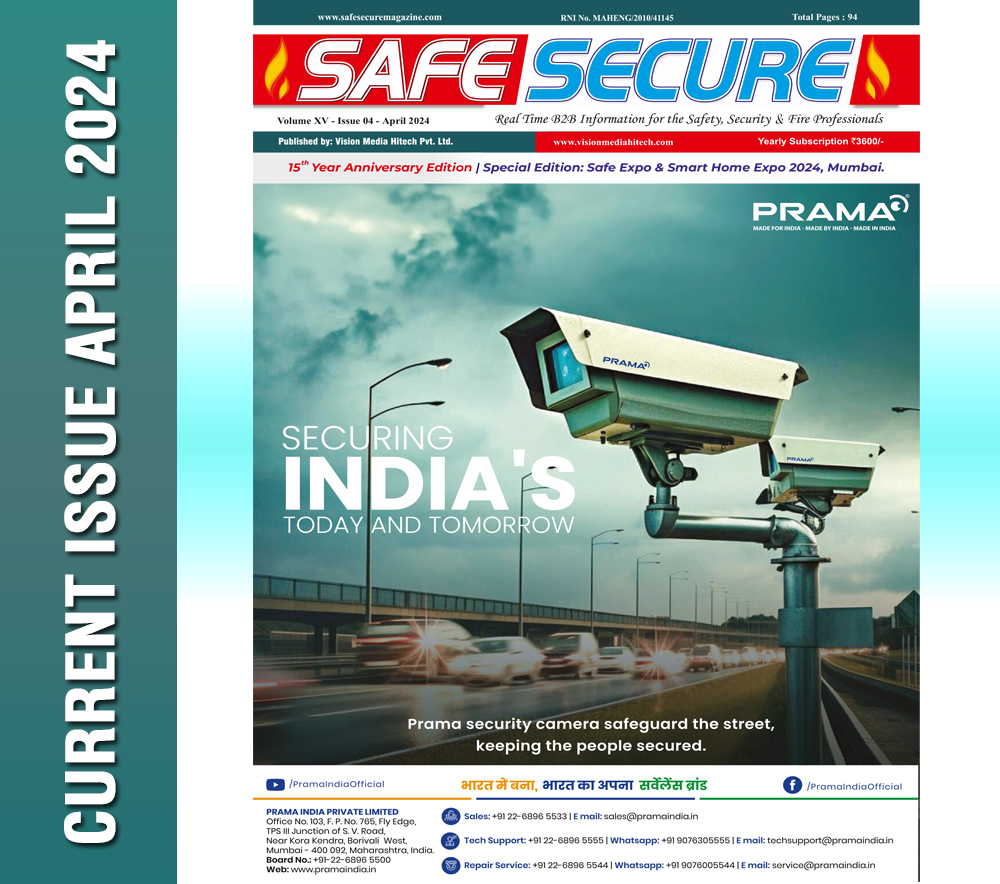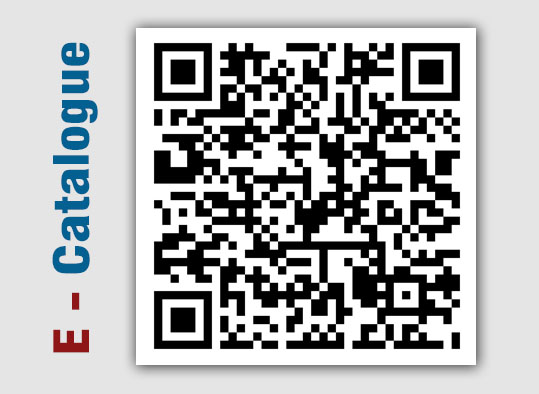Fire Safety Management

Mr.
Surendra Jagtap (Senior Fire & Safety Practitioner)
Rajiv Kumar Dogra Senior Editorial Consultant
36 years diverse international experience
at all management levels in Industrial Safety and Loss Prevention practices and
expertise in Health, Safety, Environment and Fire Engineering in 'Manufacturing
& Process' (Both, Upstream & Downstream) and 'Engineering &
Construction' Industries. He is Industrial Fire Engineering expert, effective
international team player in HSE field and well recognized HSE professional
leader. His professional strength lies in HSE strategy, innovations, and it’s
skilfully implementation with excellent administrative and people management.
He was speaker in Zero Harm Target, KL
(Malaysia); Global HSE Conference, Dubai (UAE) and Moderator IN CCPS,
Asia-pacific Regional Meet, Mumbai and Chair the session on Construction Safety
on Golden Jubilee of Central Labour Institute conference in Mumbai.
His previous experience includes in West
Africa (Dangote Refinery, Lagos - Nigeria); Middle East (ADCO, Dodsal in UAE
and NIPC, Iran) and in-home country India (Essar Projects, Nirma Petrochem, Finolex
Petrochemicals, Reliance Industries and Bajaj Auto).
Currently he is working with L&T
Hydrocarbon Engineering as Group HSE Head. He is also the member of HSE
Committee of Federation of Indian Petroleum Industry (FIPI). He is also Fellow
member of Institute of Directors (IOD), New Delhi.
He is member of National Safety Council
(India) and Institute of Fire Engineers (India). At social front, he is the trustee of NGO,
"Life Care Association, Panvel (India)" having sole motto of
Guaranteed Emergency Help.
He is recipient of "Rashtriya Gaurav
(National Pride) Award" from Indian International Friendship Society
(IIFS), New Delhi (India) in 2012 and Lifetime HSE Award from OHSSAI- Mumbai,
India in 2019.
Recently he is authored the book on
"Decoding Safety: My Way" which is now in Bestseller category of
Amazon India.
The Fire Safety Management in Factories,
Residential, Institutional or Commercial Buildings pose major Fire Threats,
mostly it is in latent nature. Unless and otherwise the active and passive fire
protects in place with
Its regular maintenance and upkeep,
whatever the measures we propose will become futile. The frequent Fire
trainings, mock drills and audits are the backbone of Fire Prevention.
Consequences of a major fire represent real risk to businesses in terms of
injury to people, property damage and business interruption. Fire extinguishing
equipment should have test/ calibration certificates.
Reference Standards
NBC National
building codes of India
BIS: 1641 Code of
practice for fire safety of buildings: General principles and fire
grading and classification
BIS: 1644 Code
of practice for fire safety of buildings: personal hazard
BIS: 2190 Code of
practice for selection, installation and maintenance of first aid fire
appliances
BIS: 5896 Code
of practice for selection, operation and maintenance of firefighting appliances
BIS: 3594 Code of
practice for fire safety of industrial building: General storage and
warehousing
BIS: 9668 Code of practice for provision and maintenance of water supplies for fire fighting
Key Definitions:
Fire Load - is a measure of the amount of flammable material present. It is proportional to the quantity and heat capacity of flammable materials.
Passive Fire Protection - are measures which do not require any outside intervention to provide protection in the case of a fire (e.g. fire walls).
Active Fire Protection - are measures which
require either manual or automatic intervention to detect and extinguish fires
(e.g. sprinklers).
Assessment and Arrangements:
• Each site, facility or location should assess the risk of fire and the resulting consequences and have arrangements to reduce these to an acceptable level. This assessment should be reviewed periodically.
• Arrangements should include provision for the prevention and detection of fires, the protection of people, assets, and the environment.
• There should be plans to deal with fires and its consequences should one occur. That should be documented, implemented,regularly tested, and reviewed. Persons nominated for specific actions in an emergency should be trained. Additionally, detailed 'Pre fire plans' should be prepared, communicated and reviewed regularly by sites e.g. refineries.
• All fire incidents should be recorded, investigated and the lessons shared.
• In-house firefighting facilities and equipment should be specified, additional arrangements agreed with local fire brigade and included in written procedures.
• Employees should be trained in emergency response and evacuation. Designated employees should be trained in the use of available firefighting equipment.
• Each site should have access to a person with appropriate fire safety expertise, who should advise on the adequacy of the plans and arrangements, assist in the assessment of the fire hazards associated with processes, materials and ignition sources ensure that the site procedures are soundly based and identify areas for improvement.
The following should be included when planning for fire prevention:
• Fire and Explosion hazards of materials
and operations should be made known to those who work with them.
• Materials which contribute to the fire
load should be controlled and stocks kept to a minimum
• Incompatible materials which could react
to cause a fire or explosion should be segregated.
• Where appropriate, materials and/or
equipment should be labeled to indicate a fire hazard.
In considering firefighting facilities the following should be taken into
account:
• The provision of appropriate equipment (portable extinguishers, hose reels, fire water system etc.) for use by local personnel.
• The involvement of local 'external' fire brigades who should be given full access to any appropriate information.
• The provision of specific on-site equipment (e.g. fire quenching systems) and/or occupants/floor marshals and Fire & security personnel trained in Fire Fighting
• The amount of firefighting water required including the means to ensure an adequate supply, together with drainage and containment facilities of contaminated run-off.
• Training for those people expected to use
fire suppression equipment (e.g. hose lines)
Controls and Monitoring:
• Sources of ignition should be identified
and controlled, and hot work permits used.
• There should be regular inspection of workplaces to detect fire hazards e.g. machinery and equipment including electrical systems, House-Keeping.
• Where needed, the system of 'De matching
at the Gate' should be implemented.
• Control gates: Wherever the system of control gates are available for hazardous areas, depositing of mobile phones, matchbox, lighters etc. shall be practiced.
• Appropriate separation distances/physical barriers should be maintained between potential sources of fire and equipment/facilities.
• Fire detection and protection measures
(passive and/or active) must be regularly inspected, tested and maintained.
• Precautions against arson should be put
in place including appropriate security to prevent unauthorized access.
Emergency response arrangements should include:
• Systems to raise the alarm quickly in the event of a fire for the local and/or external fire service to be called; Assigning designated person(s) to call external fire service in case of emergency.
• A written and rehearsed plan covering
means of escape and evacuation of all personnel from all areas of the site.
• Plans detailing how fires will be tackled, and what measures need to be taken to minimize harm to the environment by airborne and waterborne contamination. These plans should be regularly tested.
8. Measurement and Monitoring
Fire Safety Audit Checklist
1) Fire Organization: Fire personnel nos., qualifications, experience, and duties Defined, competence, professional training received.Routine activities & programmes – Formation of Auxiliary Fire Squad and nos. of trained Fire Fighting Employees available in each shift. Whether the organogram is defined for First turnout/Second turn/Third turn Fire Fighting teams and other supporting services. Whether clarity of responsibility and accountability exist for Fire Fighting team members.
2) Fire Station Facilities: Location away from hazardous areas-Fire vehicle parking areas- Fire Station Control Room facilities-Officer's seating arrangement-Firemen's Rest Room-Equip. Storages & maintenance facilities-Normal & Emergency Communication System-Fire drill facilities, etc.
3) Records & Documentation: Site Plan,
Fire Fighting System drawings & layout and it's O&M manuals, Occurrence
or Log books, Each equip.'s maintenance history card-Fire incident statistics
and its investigation reports- MSDS of all chemicals (Raw, Intermediate &
Finished products -Inspection, testing & maintenance procedure for all
appliances, Whether Fire Fighting Procedures are defined & manualized.
4) Active/Passive Fire Protection Measures:
Inter plant/facilities safe distances, Nos. of Entry/Exit gates, Width of
internal gates, Provision of Lightening Arrestor, Earthings & Bonding,
Flame proof/Explosion Proof Light fittings, Explosive storages, Gas cylinders,
Paints & other storages, tank farm handling & applications.
Suitable doors, windows,
ventilations-compartmentation, Fire Doors, etc.Working on hot process piping,
welding in hazardous Areas, Entry into confined space, opening of pipelines.
Work permit system, No smoking policy, General Housekeeping & Cleanliness.
5) Identification of Fire Hazards: Fire
hazards in process/production, Storages & Material Handlings are
identified-Its Fire Risk minimization steps taken- Residual Fire Risk Protection
measures adopted.
NFPA hazard rating diamond posted at each
hazardous Material storages, Process hold-up quantity consideredand Risk
analysis conducted, etc.
6) Mobile Appliances: Nos. & Types of
Fire Tenders and their aggregate pumping capacity-Muffler/Spark Arrestor
provided on each vehicle's exhaust pipe-Chassis make & model type-
Condition of Vehicle's body, pump and Fire equipments kept therein. Nos. &
Types of trailer pumps and trailer monitors And towing arrangements, etc.
7) Portable Equipments: Fire extinguishers
Adequate no. & type, Readily Accessible locations- Inspected, serviced
regularly and noted on inspection tag-Painting & Labelling - Training in
use of extinguishers and fire protection ~procedures- Annual Maintenance &
HPT certificates obtained.
Fire Blanket, Fire suit, Emergency
floodlights, Hose Boxes, Hoses, Nozzles, Branches, B.A. Sets, Power Megaphones,
Other Rescue gears, etc. are well maintained & tagged.
8) Fire Water System:
(i)
Reservoir capacity
(ii) Pumps
a. Type driver (s) – Reliability are
frequently overhauls needed.
b. Fuel supply (elect., gasoline or diesel
driven)
c. Pressure control and protection
d. Priming
e. How often are pumps started
f. Lubrication
(iii) Water supply source (how long available)
(iv) Main Layout
a. Looping and line size
b. Block valves for isolation, if break
occurs, whether passing loop isolation achieved.
c. Vulnerability to damage
d. Materials of construction
e. Any other use from system
f. Is system normally pressurized, is so at
what pressure
g. Are flow tests conducted
h. Is system pressure tested.
(v) Hydrants
a. Location relative to risks
b. Types & nos. of single/double head
Hydrants
c. Do outlet couplings match with local
fire brigades' couplings.
d. Protection against freezing
(vi) Monitors, Nozzles
a. Free Rotation & elevation direction
b. Locking facility
c. Throw reach
(vii)
Fixed hose reels
(viii) Fixed Water Spray Systems
a. Where installed/Locations
b. Type Nozzles
c. Testing procedures
(ix) Miscellaneous equipments (including hose, nozzles, adaptors, hose holders, wrenches)
any test performed
(x) Any potential for oil getting into
system
(xi) Annual flushing done
(xii) Isolation chambers are leak proof
& dry?
9) Foam Systems:
(i)
Adequacy of coverage and application rates possible
a. Floating roof tanks
b. Cone roof tanks
c. Spill pipe
(ii) Application means or devices (nozzles, chambers) Are tests run on this equipment-how often?
(iii) Fixed
laterals or connections
a. Terminal layout relative to water supply
and proportioning equipments.
b. Vulnerability of lines
c. Bracing of risers (Cone roof tanks)
d. Foam chambers sealing (Cone roof tanks)
e. Internal deflectors.
(iv) Proportioning Equipments
a. Suitability – proper pick-up
b. Periodic tests
(v) Equipment flushing procedures
(vi) Foam concentrate supplies
a. Quality
b. Sheltered storage
c. Dilution potential (through
proportioners)
d. Tests for continued quality.
10) Other Systems:
(i) Halon: Measures for Halon replacement extinguishing
system
(ii) DCP: Total flooding or local
application, Hazards protected, Annual maintenance records.
(iii) Co2: -----same-----
11) Fire detection & alarm system and
suppression system:
(i) Hazards covered
(ii) No. & Type of detectors installed
(iii) Electrical circuit zoning for these
detectors
(iv) No., Type & Locations of Fire
Alarm Manual call points (MCP)
(v) Free
assess to MCPs.
(vi) Location of Main, Repeater and Mimic
panel
(vi) Annual maintenance record
(vii) O & M procedure draft cleared,
understood.
(viii) Interlock to HVAC controls &
Elevator control
(ix) Fire siren hooked up if so, nos.,
range, capacity and different tone between different types of fires/emergency, audibility.
(x) Any Fire suppression system linked to
Fire detection system, give details.
12) Maintenance of Facilities: Whether
periodic inspection and maintenance/testing is done and proper records
maintained for following:
• Pumps Flow Vs Pressure Lubrications Hydrants
Pressure and flow at different points Operability of valves
• Fire water sprinkler system
• Foam proportioning equipment
• Hydro testing and thickness survey of
Fire watermains
• Fire extinguishers: (Also
refilling/disposal after use, availability and operability, Annual Maintenance,
etc.
• Small gear : Hoses, Nozzles, Adopters,
Hose holders, wrenches, etc.
• Foam concentrate : Inventory & Expiry
Record Confirmed quality and disposal, expiry date, records & Test runs.
13) Fire Prevention Awareness: Signs & Posters displayed
• Slogans placed at appropriate locations
• Observance Annual Fire Service Day i.e.
14th April And arranging Fire drill competition & Fire demonstrations.
• Various tech. Books, standards, codes, etc. on different Fire subjects available in Library.
Membership with professional
bodies viz. IFE, NSC, FSIA, etc. and obtaining their periodicals
regularly.
14) Trainings:
(i) Facilities for Live Fire Fighting is
adequate
(ii) Whether training provided to all
levels of employees including contractor's employees is adequate w.r.t.
following items.
• Classroom/Field training (for Fire crew
& others)
• Course contents
• Frequency
• Mock drills
• Procedure
• Frequency
• Records
• % Coverage of all concerned employees
(iii) Professional Training for Auxiliary
Fire Squad Members, Firemen & Fire Officers.
(iv) Adequate Refresher Courses for all
categories of employees.
(v) Whether
personnel in the Fire Fighting department have necessary qualifications.
(vi) Arranged/Surprised Mock-drills
conducted, performance reviewed & remedies for skill up gradation sought.
(vii) B.A. Set training & accuracy of
doing.
15) Legal Provisions: All statutory
provisions related to recently enacted HSW Code 2020 and therein respective
local Fire Authority of Jurisdiction State Factory Rules, etc. are strictly
complied.
16) Fire Emergency Plan: Comprehensive
On-Site Emergency Plan is prepared Control measures, awareness, control centre,
emergency equipment First-Aid and Ambulance service team trained. Chief Coordinator Trained to take control- Mock
drills being regularly conducted, Performance reviewed and skill updating- The
procedure for safe.
Start up and safe shutdown of operations is
clear, unambiguous and well-rehearsed- Total Evacuation plan, safe assembly
points are mentioned & followed.
17) Communication Systems: Within and/to
outside
• Normal
& Emergency
• Condition of Radio communication
equipments
• Availability of two independent power
supply
• Inspection & maintenance schedule
• Training of the users
18) Mutual – Aid scheme: Whether Mutual Aid
schemes are made with neighboures, local Fire Brigades, etc.
• Whether responsibilities are defined
• Whether contact points are established
• Whether all above details are documented
• Whether persons from neighbouring
industry are trained To fight fires in oil/gas/petrochemicals installations.
Whether Mutual Aid schemes are periodically
discussed with neighbouring industries?
How far is the nearest city Fire Brigade?
How emergency communication can be sent to city Fire
Brigade?
Are the city Fire Brigade Officers familiar
with the risk?
19) Fire Incident Reporting, Recording, Investigation Procedures:
Report Forms Reported as Dangerous occurrence as
statutorily required. Case Histories of Fire Incidents Fruitful finding disclosed
to O & M staff for avoiding recurrences.
20) Insurance Coverage: Is the property/business covered under insurance scheme. Rebate on Fire Insurance premium from Insurance Co. as per norms.
*Preface*
'Decoding Safety: My Way' features the
first-hand experiences of Safety Professional and first-time author Mr.
Surendra Jagtap who from his humble beginnings rose to scale the heights of
success in the field of Health, Safety and Environment (HSE) on a global stage.
Over the years, several books have been
published on the subject of Fire Safety Management, HSE, Loss Prevention, Safety
& Fire Engineering, however, it is for the first time perhaps that a book
has been written where the author has carefully documented the real-life
scenarios from the industry, which makes for an authentic and an relatable
read.
While adopting an autobiographical tone,
the book outlines first-hand experiences from the industry without quoting any
individual in particular.
A widely respected safety professional, Mr.
Jagtap is the recipient of several industry awards and accolades. He is known
to be a thorough professional and a global expert in his field. He has assumed
senior management roles in some of the top-notch international petrochemical,
petroleum and oil & gas companies where he has been instrumental in setting
up new benchmarks in the field fire and safety systems.
His penchant for empowering his co-workers
is manifested through the kind of programs and trainings he has been conducting
for them over the years. His articulation of thoughts and knowledge of the
subject, interwoven with practical insights has aptly culminated into the
writing of this book.
The book is a treasure trove of information
and covers wider aspects of a seemingly complicated subject like Fire Safety
Management, HSE, Loss Prevention, Safety and Fire Engineering in a lucid and
easy to understand manner.
Mr. Jagtap remains an inspiring role model
in the HSE, Loss Prevention, Safety and Fire Engineering realm, especially for
the aspirants in the industry. His book is a guiding reference of his technical
knowledge and practical experience, while providing readers with insights about
pitfalls they are most likely to experience during their work tenure. For the
practising HSE professionals and young aspirants, this book is a perfect guide.
Thumb through the pages and you would realise the hard work and determination with which the author has penned down his text. There's inspiration to be had on every page.












